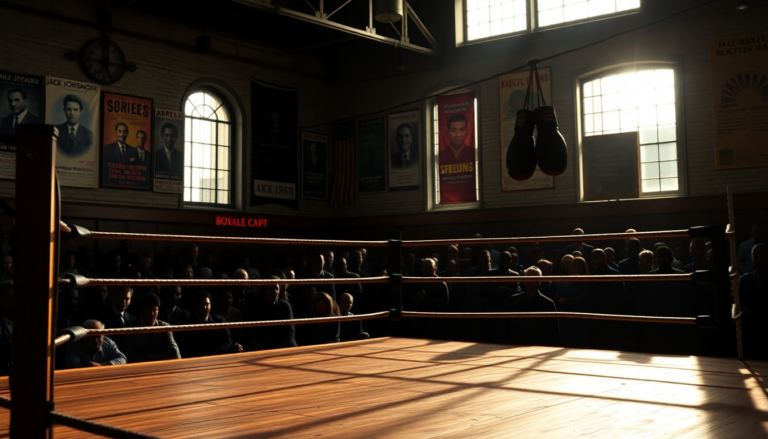Argomenti trattati
Jack Johnson, famously known as the “Galveston Giant,” was much more than just a heavyweight boxing champion; he was a pivotal figure in American history who boldly challenged the racial norms of his time. Born on March 31, 1878, in Galveston, Texas, Johnson emerged from humble beginnings to become the first black world heavyweight champion, holding the title from 1908 to 1915. His story isn’t merely one of athletic excellence; it’s a powerful tale of resilience set against the backdrop of a racially divided America.
Early Life and Rise to Prominence
As the third of nine children born to former slaves Henry and Tina Johnson, Jack’s upbringing was marked by both struggle and opportunity. His father worked as a janitor and his mother as a dishwasher, but despite their modest means, Johnson shone brightly in his pursuits. Growing up in Galveston, he experienced a relatively unique level of racial integration compared to other Southern regions, enabling him to form friendships across racial lines.
Johnson’s journey into boxing began when he apprenticed with a carriage painter named Walter Lewis, who introduced him to the sport. The local boxing scene provided him with a platform to display his talent, and he quickly garnered attention. He made his professional debut on November 1, 1898, delivering a stunning knockout of Charley Brooks in the second round of a match for the Texas State Middleweight Title.
However, Johnson’s early career wasn’t without its hurdles. He faced racial prejudice and challenges, yet his undeniable skill in the ring allowed him to earn victories against both black and white opponents. On February 3, 1903, he claimed his first title, the World Colored Heavyweight Championship, which he later vacated after winning the world heavyweight title from Tommy Burns on December 26, 1908.
The Fight of the Century and Its Aftermath
Perhaps the most significant moment of Johnson’s career came on July 4, 1910, when he faced former champion James J. Jeffries in what was dubbed the “Fight of the Century.” This match was steeped in racial tension, as Jeffries emerged from retirement claiming he wanted to prove the superiority of the white race. However, Johnson showcased his prowess by dominating the match, knocking Jeffries down multiple times before the fight was ultimately stopped by Jeffries’ corner after the 15th round.
The aftermath of this fight was explosive. Johnson’s victory triggered race riots across the United States, as many white audiences reacted violently to the outcome. For countless black Americans, however, Johnson’s win symbolized a significant breakthrough in the fight for racial equality, igniting hope and pride within the African American community.
Despite his triumphs in the ring, Johnson faced significant obstacles outside it, particularly due to his relationships with white women and his defiance of social norms. These connections led to his arrest under the Mann Act—an unfair law that targeted the transportation of women across state lines for immoral purposes. Following his conviction, Johnson fled the country, living in exile for several years until he returned to serve his sentence in 1920.
Legacy and Cultural Impact
Jack Johnson’s legacy transcends his boxing achievements. He emerged as a cultural icon, embodying the struggle against racial injustice and the quest for equality. His life story has inspired numerous artistic works—from plays to films to music—highlighting the complexities of his character and the societal challenges he faced.
Johnson’s journey resonates today, reflecting ongoing conversations about race, identity, and representation in both sports and society. His influence is palpable in the careers of subsequent African American athletes who followed in his footsteps, breaking barriers and challenging stereotypes along the way.
In 2018, Johnson received a posthumous pardon from President Donald Trump, acknowledging the racial injustices he faced during his life. This act serves as a poignant reminder of the enduring impact of his legacy on both sports and civil rights in America. Isn’t it fascinating how one individual’s fight can resonate through generations?

